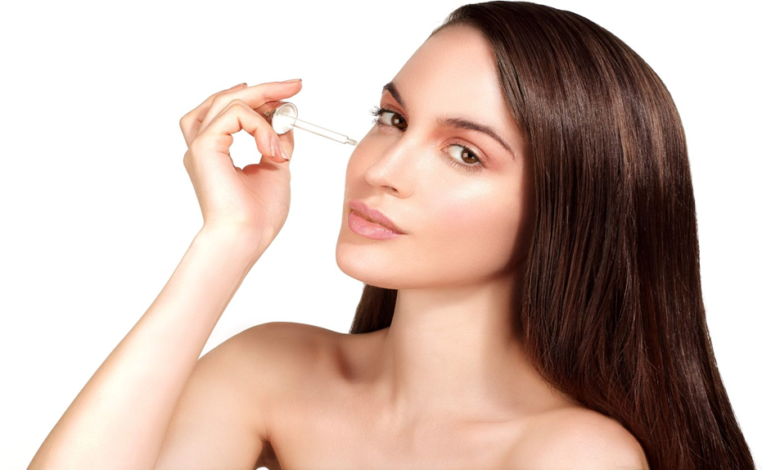What Not to Use with Retinol, According to Dermatologists

Retinol Use: Skincare routines have become increasingly complex with the plethora of products available in the market. However, mixing these products without proper knowledge can lead to ineffective results and potential skin irritation. Dermatologists emphasize the importance of understanding how ingredients interact with each other to maximize the benefits of skincare products.
In the pursuit of achieving flawless skin, individuals often experiment with various skincare products. However, incorporating these products into a routine without considering their compatibility can lead to adverse effects. Dermatologists highlight the significance of using complementary products to enhance skincare results.
Importance of Complementary Products in Skincare Routine
Dr. Shari Marchbein underscores the importance of selecting products that work synergistically to avoid over-drying, over-exfoliating, or irritating the skin. Dr. David Lortscher further emphasizes that more products do not necessarily equate to better results.
Understanding Retinol: Benefits and Side Effects
Retinol, a derivative of Vitamin A, offers numerous benefits such as promoting skin cell turnover and improving various skin concerns like fine lines, wrinkles, and acne. However, it can also cause skin irritation as a side effect.
Retinol: Compatible and Incompatible Ingredients
While retinol is known to complement moisturizing ingredients like hyaluronic acid and ceramides, it’s important to be mindful of certain combinations that may not yield the desired results or could potentially cause adverse effects. In addition to avoiding mixing retinol with vitamin C, benzoyl peroxide, and AHA/BHA acids, there are other considerations to keep in mind when incorporating retinol into your skincare routine.
1. Niacinamide: While there is some debate about whether niacinamide can be used with retinol, many experts believe that these two ingredients can be complementary when used together. However, if you experience any irritation or sensitivity, it’s best to use them at different times of the day or on alternating days.
2. Sunscreen: Retinol can increase the skin’s sensitivity to sunlight, so it’s crucial to apply sunscreen diligently when using retinol-based products. Opt for a broad-spectrum sunscreen with SPF 30 or higher to protect your skin from harmful UV rays and minimize the risk of sun damage.
3. Moisturizers: Incorporating a nourishing moisturizer into your skincare routine can help counteract the dryness and irritation that may occur with retinol use. Look for moisturizers containing soothing ingredients like aloe vera, glycerin, and shea butter to hydrate and calm the skin.
4. Patch Testing: Before introducing retinol or any new skincare product into your routine, it’s advisable to perform a patch test to assess how your skin reacts. Apply a small amount of the product to a discreet area of your skin and monitor for any signs of irritation or sensitivity over the next 24-48 hours.
Proper Use of Retinol in Skincare Routine
When incorporating retinol into a skincare routine, it’s essential to moisturize and wear sunscreen regularly. Dr. Marchbein recommends using humectant ingredients like hyaluronic acid to draw and hold water molecules to the skin’s surface and applying sunscreen to protect against sun sensitivity.
Vitamin C: Benefits and Side Effects
Vitamin C serves as an antioxidant that brightens the skin and lightens dark spots. However, it can irritate sensitive skin if used in high concentrations.
Vitamin C: Compatibility with Other Ingredients
Dr. Marchbein advises using Vitamin C in the morning, preferably layered under sunscreen. It works well with other antioxidants like Vitamin E and should be avoided in conjunction with retinol due to their differing functions.
AHAs/BHAs: Benefits and Side Effects
AHAs and BHAs act as exfoliants, improving skin texture, tone, and treating acne. However, they can dehydrate and irritate the skin if not used properly.
AHAs/BHAs: Compatible and Incompatible Ingredients
While AHAs and BHAs work well with moisturizing ingredients and SPF, they should not be mixed with Vitamin C and retinol. Dr. Marchbein warns against combining various acids with retinoids, as it may cause excessive skin sensitivity and irritation.
Best Practices for Using AHAs/BHAs
Moisturizing after applying AHAs/BHAs is crucial to limit irritation. Look for hydrating ingredients like ceramides and hyaluronic acid to soothe the skin. Additionally, wearing sunscreen is essential to protect against sun sensitivity.
Benzoyl Peroxide: Benefits and Side Effects
Benzoyl peroxide helps fight acne but may cause dryness and irritation as side effects.
Benzoyl Peroxide: Compatibility with Other Ingredients
While benzoyl peroxide can be used with gentle hydrating ingredients and SPF, it should not be mixed with retinol. Dr. Lortscher advises caution when combining benzoyl peroxide with acne prescription tretinoin.
Niacinamide (Vitamin B3): Benefits and Side Effects
Niacinamide brightens the skin, evens out discoloration, and reduces inflammation without causing significant side effects.
Niacinamide: Compatibility with Other Ingredients
Niacinamide is compatible with almost every ingredient in a skincare routine except for Vitamin C. Dr. Lortscher recommends using leave-on products like moisturizers for best results.
Importance of SPF in Skincare Routine
SPF is crucial for preventing skin cancers, wrinkles, and sunspots caused by UV damage. It should be layered over every skin care product to preserve its protective factors.



